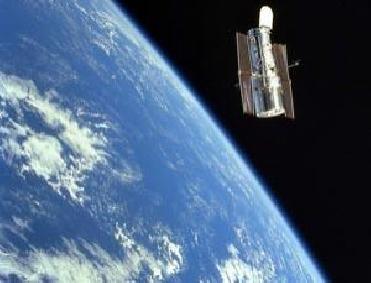
Close approaches are likely to become more regular. Image Credit: NASA
NEW DELHI (BNS): The rapidly increasing number of space debris will greatly affect future space missions if steps are not taken to stop the junk pile, according to a report by the New Scientist.
The number of close encounters between objects in orbit will rise 50 per cent in the next decade, and quadruple by 2059, said Hugh Lewis of the University of Southampton, UK, at the European Air and Space Conference in Manchester.
The report said, ever since the Soviet Union launched Sputnik 1 in 1957, satellite operators have used Earth orbit as a junkyard, dumping spent rocket stages and dead spacecraft there.
However, the danger of collisions with active spacecraft began to be exposed and space agencies have tried not to add to the junk pile, but without much success.
In 2007, the Chinese army used a missile to destroy a defunct weather satellite, and earlier this year an Iridium communications satellite collided with a derelict Russian vehicle. Both events added many thousands of debris shards to near-Earth space.
The number of pieces of space debris has risen by 40 per cent in the past four years alone, the report said, adding, the US air force Space Command now tracks 19,000 orbiting objects that are 10 centimetres or more across - including around 800 working satellites - and estimates that there are 500,000 smaller fragments in orbit.
To find out what effect this growing debris field would have on managing future satellite operations and how much more often the mission controllers have to track debris and consider taking evasive action, Lewis carried out a study using data from an industry database called Socrates to correlate the change over time in the quantity of debris with the number of occasions on which objects come within 5 kilometres of each other. Then, using the predicted growth in the debris population over the next 50 years, he estimated the number of close approaches that are set to occur.
Compared with the 13,000 close approaches per week now, his projection showed that there will be 20,000 a week in 2019 and upwards of 50,000 a week in 2059. From this he predicts that satellite operators will have to make five times as many collision avoidance manoeuvres in 2059 as they will in 2019.
�The European Space Agency is already seeing an increase in close approaches to its ERS-2 and Envisat Earth-observation spacecraft,� says Heiner Klinkrad, who heads the agency's space-debris office in Darmstadt, Germany. But while he recognises that Lewis's numbers "sound threatening" he believes operators should be able to cope if they maintain strong tracking capabilities.
 Next Article
Next Article













The Indian Air Force, in its flight trials evaluation report submitted before the Defence Ministry l..
view articleAn insight into the Medium Multi-Role Combat Aircraft competition...
view articleSky enthusiasts can now spot the International Space Station (ISS) commanded by Indian-American astr..
view article